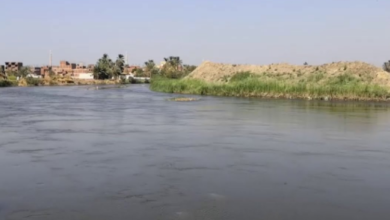Close enough for a day trip and boasting beautiful natural scenery, Fayoum's Wadi al-Rayan natural protectorate is an increasingly popular getaway for Cairo's residents.
As you drive into the protectorate, a natural depression lying 43 meters below sea level, you are greeted by a view of endless desert, and a promise of silence and serenity. The Wadi (Arabic for valley) in Egypt's Western Desert was designated a protected area in 1989 to sustain its biological, geographical and cultural resources. It's an hour and a half drive from Cairo.
When you arrive at the protectorate, make sure to ask for a map of the area from the guards when you pay for your (nominally priced) tickets. On the map you will see a long asphalt road leading to Beni Sueif in Upper Egypt that goes around two large lakes. Midwarra mountain, a picturesque area, lies on the far edge of the second lake, and the entrance to the 50km sand track to Wadi al-Heitan (Valley of the Whales) is found right after it.
Having a 4×4 gives you more freedom to drive off the asphalt and into the sand tracks surrounding the lakes, but there is still plenty to do if you cannot get your hands on one.
The two lakes, conveniently named the First and Second lakes, are connected by small waterfalls which the area is famous for. There, on weekends and holidays, you can find large groups of people bathing fully-clothed, eating, drinking and basking in the warmth of the sun. There is a sense of controlled chaos. Jumping off the rocks and into the waterfalls seems to be the main activity for young men. Those not standing in line waiting their turn to make the leap can be seen playing ball games, shouting loudly and swimming and splashing in the water.
A short distance from the falls, a walk around the lake leads to a sandy area where you can enter the cool and calm water for a quick dip. Most of the coast is covered in thick grey mud which you can easily sink knee-deep into if you stand still for less than a minute. Do not expect a Mediterranean beach experience. But if you tread lightly and quickly over some of the less muddy areas of the beach and into the lake you will soon find yourself swimming in clear water without problems. There are no showers around, so it's a good idea to carry a jerry-can of water for washing afterward.
If you get hungry there are some inexpensive cafeterias in the area which you might want to use if the quality of the food and its cleanliness don't concern you–alternatively, bring along your own food.
To extend your stay for more than one day and spend a night under the stars there are some recommended camping spots which can be found on the map. Based on personal experience, I highly recommend the main camping ground at Wadi al-Heitan. You don’t need to bring a tent or a sleeping bag as they can be rented there at LE50 per tent per night and LE25 per sleeping bag.
Wadi al-Heitan is an attraction in its own right. It was named a UNESCO world heritage site in 2005 after the discovery of a large concentration of ancient whale fossils there. These fossils are on display, lying in the sand, in among signposted walking tracks. Going round the whole exhibition takes about an hour and thirty minutes under the punishing sun.
The signposted camping spot right before the entrance of the valley lies in a cul-de-sac between the hills. A sense of quiet and seclusion is the first impression you get of the area after switching off the car engine.
You may discover that your ears start ringing as they experience lower levels of sound than they are used to. In the city there is an array of noises, yet none of them causes us to twitch a muscle. We have adapted by learning to ignore them. Surprisingly in the middle of the desert, your attention is fully devoted to the slightest of disturbances.
The first of these disturbances you are bound to notice are the foxes running around the camp with their light brown fur, colorful eyes, long ears and thick tails. They have been taught the presence of campers signals food, and they are usually hungry.
“There are fourteen foxes in this area,” the park ranger explained to me when I first arrived, “but they are dispersed in the mountain. Don’t worry they are harmless.” Shining a light at them or making a loud sound will send them on their way. Giving them food is fine, as long as you don’t mind attracting the rest of the pack.
The camping grounds are well equipped, with a metal tray in the center where the camp fire sits, and some hay baskets to leave trash behind. There is also a clay oven you can use if you have the necessary skills. Next to the oven are some large steel pegs and a hammer, handy if the wind necessitates more secure anchoring of tents. I was glad they were available when my tent, with my backpack inside, flew off into the mountains on a windy night.
Once camp is set up, food eaten and the camp fire died out, comes the best part of the night. Switch off your torch, lay down on your back and enjoy nature’s most impressive fireworks display: shooting stars. The sky is nightly awash with brightly shinning stars, something you will never see in the city. Clear your mind by counting the number of those which fall and shoot across the clear night sky until you find yourself fast asleep in the embrace of the desert.




